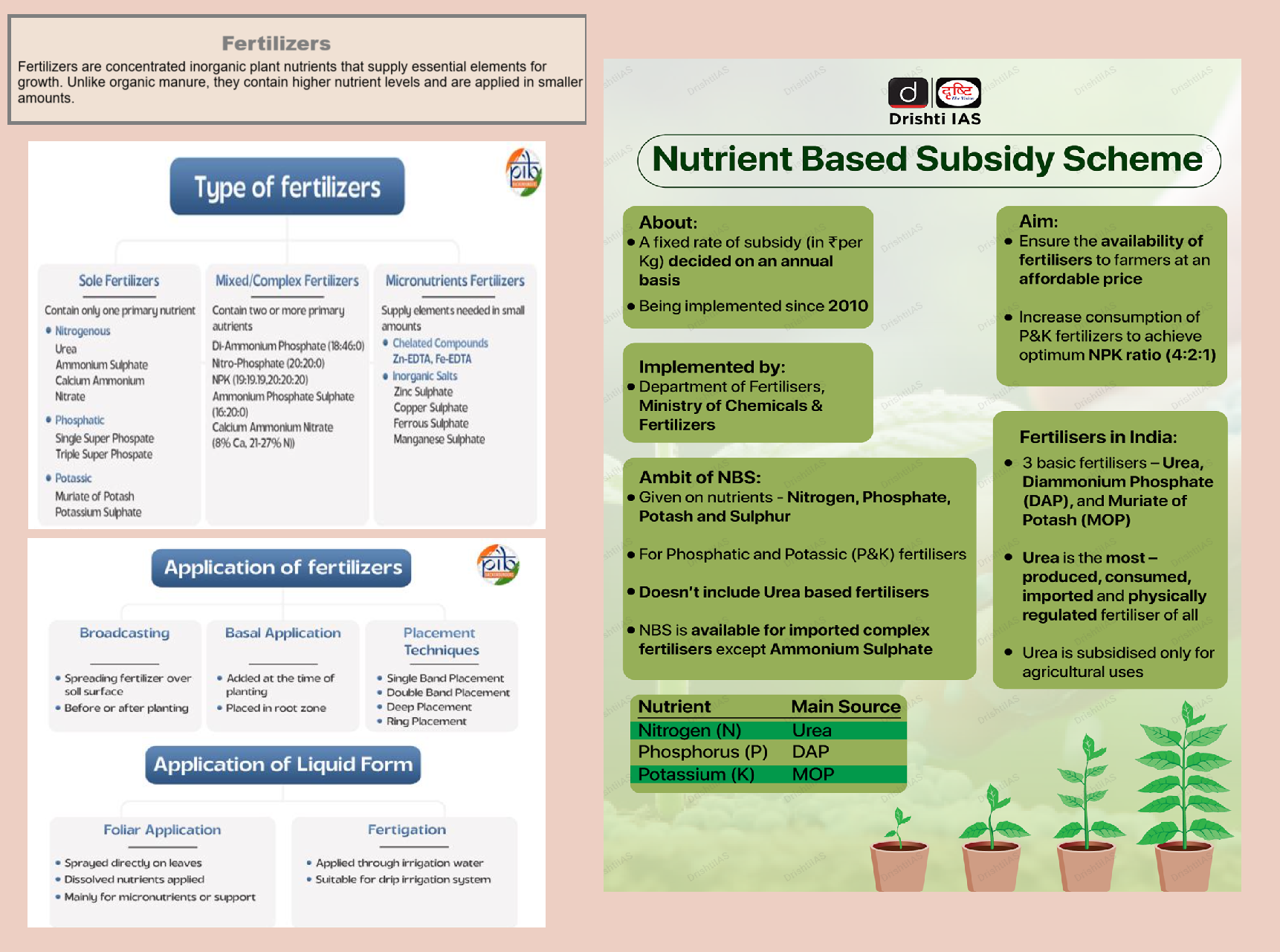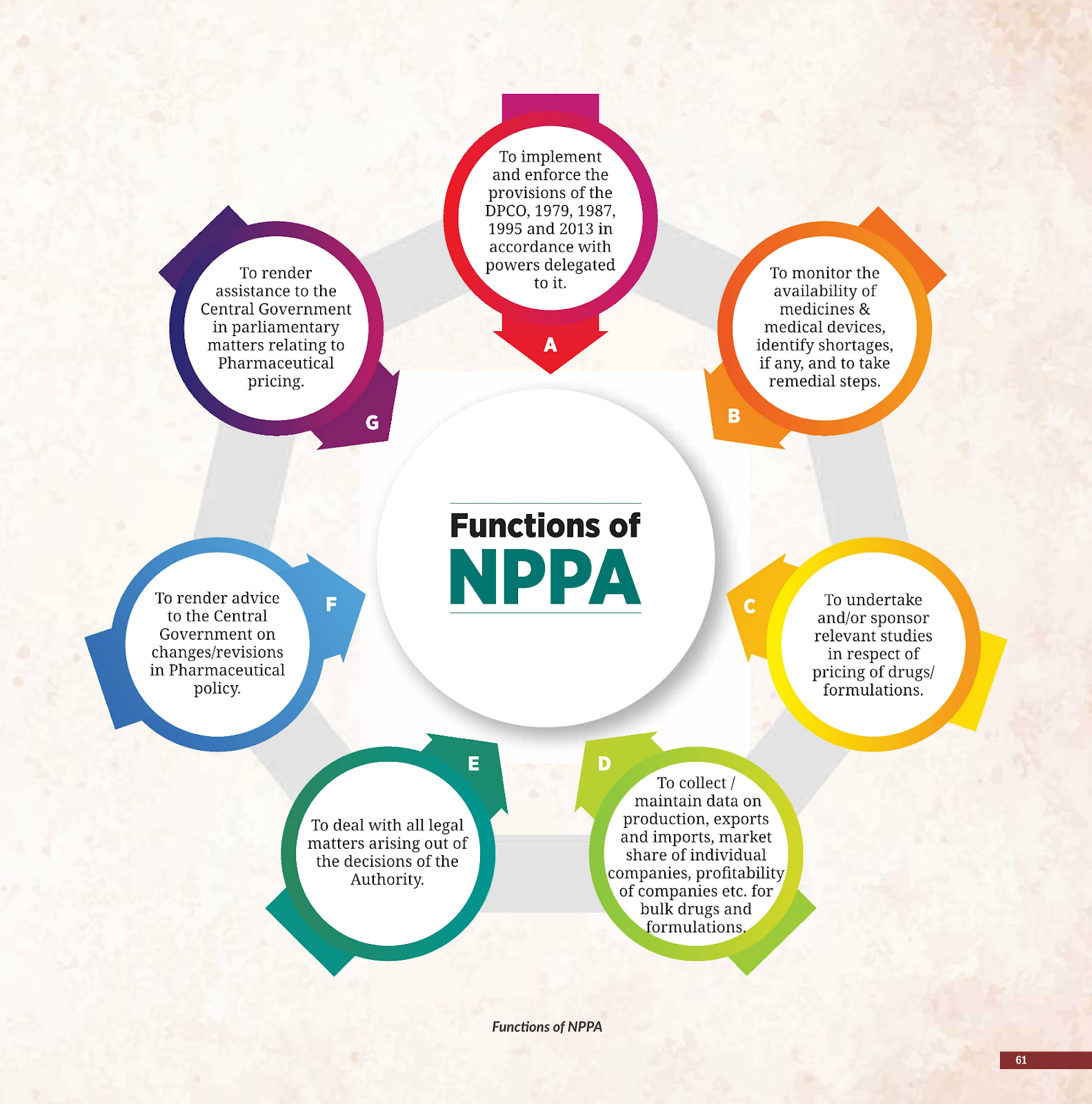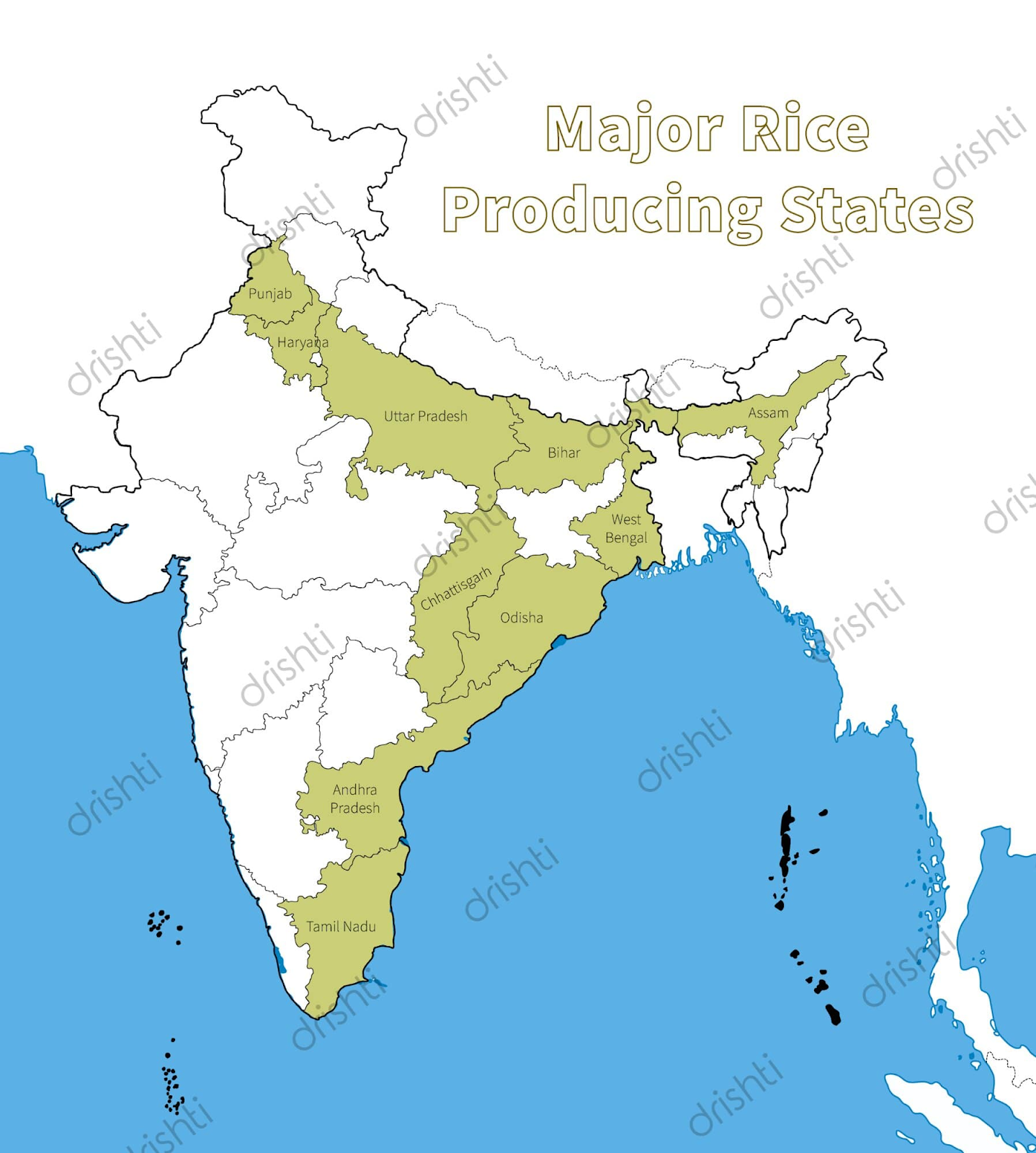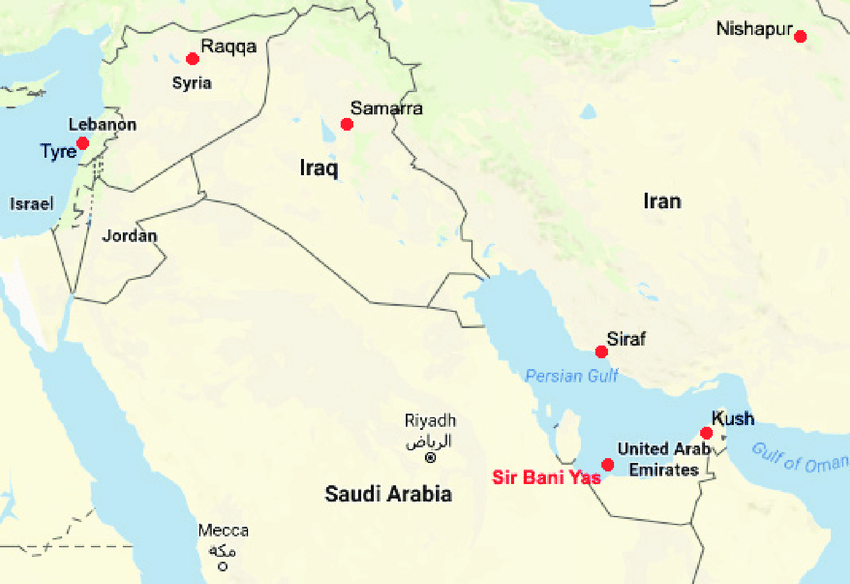Indian Economy
Fertilizer Sector in India
For Prelims: One Nation One Fertilizer, Nano‑fertilizers, Neem Coated Urea, Pradhan Mantri Kisan Samridhi Kendras
For Mains: Fertilizer Sector, Atmanirbhar Bharat & Strategic Sectors.
Why in News?
A parliamentary committee has urged the government to reclassify the fertilizer sector as ‘strategic’, criticizing its current ‘non-strategic’ status as inconsistent with India’s self-reliance goals under Atmanirbhar Bharat, especially in light of growing import dependency and food security concerns.
What are the Parliamentary Committee Observations and Recommendations on the Fertilizer Sector?
Observations
- Link to Food Security: Fertilizers are crucial for agricultural productivity and food sovereignty. The panel noted that India’s high import dependence (25% for urea, 90% for phosphates, and 100% for potash) makes strengthening fertilizer PSUs essential for domestic production, price stability, disaster resilience, and long-term food security.
- The Department of Investment and Public Asset Management (DIPAM) denied strategic status to the fertilizer sector despite the sector’s critical role in food security.
- Low PSU Market Share: Public Sector Undertakings (PSUs) contribute only ~25% of urea and ~11% of non-urea fertilizer production.
- The private sector dominates the industry, contributing over 57% of total production (2023–24).
- The panel noted that PSUs serve as price stabilizers, particularly for small and marginal farmers through government-subsidized distribution, underscoring the need to treat the fertilizer sector as strategic.
Recommendations
- Policy Support: Classify the sector as ‘strategic’ to attract sustained investment and ensure alignment with Atmanirbhar Bharat goals.
- Revitalizing Fertilizer PSUs: Launch a dedicated mission to upgrade technology, diversify products, and adopt sustainable practices in public sector units.
- The committee noted that revived fertilizer PSUs have achieved a successful turnaround, with the reopening of closed units contributing 7.62 MT to annual urea production.
How Integral are Fertilizers to India's Agriculture and Economy?
- Agriculture’s Economic Footprint: Agriculture and allied sectors contribute nearly 16% to GDP and support over 46% of India’s population, forming a foundational pillar for economic livelihood.
- Fertilizer Production and Consumption Trends: India is the second-largest user and third-largest producer of fertilizers globally.
- The total Fertilizer production has increased from 385.39 Lakh Metric Tonnes (LMT) in 2014–15 to 503.35 LMT in 2023–24.
- In 2023–24, fertilizer production was led by the private sector (57.77%), followed by cooperatives (24.81%) and the public sector (17.43%).
- Import Dependency: In 2023–24, India consumed 601 LMT of fertilizers, producing 503 LMT domestically and importing 177 LMT.
- Self-sufficiency reached 87% for urea, 90% for NPK (nitrogen, phosphorus, and potassium), but only 40% for DAP (Di-Ammonium Phosphate), while Muriate of Potash (MOP) remains 100% imported.
How is India’s Fertilizer Sector Evolving Towards Sustainability and Self-Reliance?
- Brand Unification under ONOF: The One Nation One Fertilizer (ONOF) initiative standardizes branding across subsidized fertilizers like ‘Bharat Urea’, ‘Bharat DAP’, etc. to eliminate confusion and ensure uniform quality and government support.
- Sustainable Fertilizer Practices:
- Nano‑fertilizers (nano urea, nano DAP): Nutrients encapsulated in tiny particles, releasing slowly into the soil for better plant absorption and minimal wastage..
- Neem-Coated Urea (NCU): Improves nitrogen efficiency, requiring ~10% less urea to achieve comparable results, minimizing losses and enhancing soil health.
- PM‑PRANAM Scheme: Encourages reduced chemical fertilizer use, promoting organic alternatives, with state incentives linked to performance.
- Bio-fertilizers & Soil Health Card Scheme: Emphasize balanced nutrient input and tailored soil management through diagnostics and farmer guidance.
- Technological & Digital Infrastructure:
- iFMS (Integrated Fertilizer Management System): Enables real-time tracking of fertilizer movement from production to retail.
- mFMS (Mobile FMS): Facilitates dealer registration, stock monitoring, and supports DBT through MIS dashboards accessible via mobile.
What are the Challenges in Categorizing the Fertilizer Sector as ‘Strategic’?
- Global Integration and Supply Diversification: India has secured long-term DAP supply agreements with Saudi Arabia and Morocco, reducing the pressure to maintain large strategic production reserves.
- Technological Obsolescence: Older PSU plants suffer from low efficiency, high input costs, and require heavy capital for modernization.
- This raises doubts about whether strategic status would yield productivity gains without major reform.
- Some PSUs continue to operate at sub-optimal capacity due to raw material constraints, pricing mismatches, or outdated technology—further weakening the strategic case.
- Policy Inconsistency and Sectoral Ambiguity: The contradiction between treating fertilizers as essential to food security (by the Agriculture Ministry) versus a non-strategic commercial sector (by DIPAM) reflects policy incoherence.
- This makes inter-ministerial consensus difficult and slows reform momentum.
How can India Make its fertilizer Sector Self-Reliant?
- Boost Domestic Production: Under New Investment Policy (NIP) 2012 ensure existing units operate profitably and revive closed plants to reduce import dependence.
- Innovation & Sustainability: Invest in research and development for new fertilizer formulations, eco-friendly production, and efficient resource use.
- Promote use of bio-fertilizers and nano-fertilizers through PM-PRANAM Scheme and Pradhan Mantri Kisan Samridhi Kendras (PMKSKs).
- Promote Public-Private Collaboration: Encourage partnerships for innovation, investment, and increased production capacity.
- Regional Manufacturing Hubs: Establish fertilizer clusters near key agricultural zones to cut logistics costs and ensure quicker distribution.
- Financial Incentives: Introduce a PLI (Production Linked Incentive) scheme for nano-fertilizer production to incentivize manufacturers and accelerate adoption.
- Integrate nano-fertilizers into national nutrient management programs to complement conventional fertilizers and reduce import dependence.
|
Drishti Mains Question: Q. Critically examine the need to classify the fertilizer sector as strategic in the context of India’s food security and Atmanirbhar Bharat agenda. |
UPSC Civil Services Examination, Previous Year Questions (PYQs)
Prelims
Q. With reference to chemical fertilizers in India, consider the following statements: (2020)
- At present, the retail price of chemical fertilizers is market-driven and not administered by the Government.
- Ammonia, which is an input of urea, is produced from natural gas.
- Sulphur, which is a raw material for phosphoric acid fertilizer, is a by-product of oil refineries.
Which of the statements given above is/are correct?
(a) 1 only
(b) 2 and 3 only
(c) 2 only
(d) 1, 2 and 3
Ans: (b)
Q. Why does the Government of India promote the use of ‘Neem-coated Urea’ in agriculture? (2016)
(a) Release of Neem oil in the soil increases nitrogen fixation by the soil microorganisms.
(b) Neem coating slows down the rate of dissolution of urea in the soil.
(c) Nitrous oxide, which is a greenhouse gas, is not at all released into atmosphere by crop fields.
(d) It is a combination of a weedicide and a fertilizer for particular crops.
Ans: (b)


Biodiversity & Environment
Invasive Alien Species
For Prelims: Invasive Alien Species, Biodiversity, Water hyacinth, Kunming-Montreal Global Biodiversity Framework, Convention on Biological Diversity, Convention on the Conservation of Migratory Species, Convention on International Trade in Endangered Species of Wild Fauna and Flora.
For Mains: Factors Responsible for Rising Invasive Species, Impact of Invasive Species & Strategies to Mitigate them.
Why in News?
A recent study estimates that the global economic cost of Invasive Alien Species (1960–2022) exceeds USD 2.2 trillion, with management costs underreported up to 16 times.
- For India, the study highlights a hidden cost discrepancy of 1.16 billions of times higher than reported figures indicating gross underestimation of financial and administrative measures to manage invasive species.
What are Invasive Alien Species?
- About: Invasive Alien Species are non-native organisms (plants, animals, fungi, or even microbes) introduced beyond their natural range, forming self-sustaining populations.
- They outcompete native species, disrupt ecosystems, and cause significant ecological, economic, and social impacts.
- According to the Convention on Biological Diversity (CBD), IAS are species that can “arrive, survive, and thrive”, often outcompeting native species for resources.
- In India, the Wildlife Protection Act, 1972 defines IAS as non-native species that threaten wildlife or habitats.
- Key Invasive Alien Species in India: Animal species like African catfish, Nile tilapia, red-bellied piranha, alligator gar, Red-eared Slider (a North American turtle) and plants like Lantana, Water Hyacinth, and Prosopis juliflora, are among the most widespread invasive species in India.
- Factors Responsible for the Rise of Invasive Alien Species:
- Globalisation-Linked Dispersal: Increased trade and travel facilitate unintentional spread of species via cargo, ballast water, and transport vehicles.
- For instance, the Black Rat, introduced to Australia in the 1800s, is listed among the “World’s Worst” invasive species by the IUCN.
- Also, the Zebra mussel, native to Eurasia, was introduced to the Great Lakes of North America via the ballast water of cargo ships.
- Climate-Driven Proliferation: Changes in temperature and precipitation create favourable conditions for invasive species and disrupt native species’ life cycles, making them vulnerable to competition and predation.
- Eg: Warmer conditions accelerate spread of invasive insects, cinnamon fungus, and aquatic species (fish, mollusks), intensifying competition and predation on native species.
- Habitat Disturbance and Degradation: Human activities that disturb or degrade natural ecosystems, like deforestation, urbanization, and agriculture, can create opportunities for invasive species to colonize.
- Eg: Parthenium hysterophorus, commonly known as carrot grass, thrives in disturbed habitats like roadsides and agricultural fields. Its presence is often a sign of environmental degradation.
- Human Introduction of Exotic Species: Across the world, many invasive alien species have been deliberately introduced by humans for purposes such as ornamental gardening, landscaping, aquaculture, or pest control.
- However, these introductions often backfire, as species escape into the wild and outcompete native biodiversity.
- For instance, Water hyacinth or "Terror of Bengal" was introduced in India because of its beautiful foliage and flowers.
- Globalisation-Linked Dispersal: Increased trade and travel facilitate unintentional spread of species via cargo, ballast water, and transport vehicles.
What are the Key Impacts of Invasive Alien Species?
- Ecological Impact: Globally, Invasive Alien Species are one of the 5 major direct drivers of biodiversity loss.
- They cause the decline or extinction of native species through competition, predation, or disease, disrupting ecosystem functions and leading to ecological imbalance and habitat loss.
- Eg: Brown tree snake, accidentally introduced to Guam after World War II, has caused significant ecological damage, leading to the extirpation (local extinction) of many native forest bird species.
- Economic Impact: They impose substantial financial burdens on countries and sectors worldwide, affecting livelihoods in developing countries by impacting agriculture, forestry, and fisheries.
- Among Invasive Alien Species, plants are the most economically damaging, with management costs of USD 926.38 billion, followed by arthropods and mammals.
- Aquatic species like Water Hyacinth in Lake Victoria have led to tilapia depletion, impacting local fisheries.
- Europe incurs the highest absolute costs (71.45% of global expenditure) due to higher agricultural values and management expenses.
- Among Invasive Alien Species, plants are the most economically damaging, with management costs of USD 926.38 billion, followed by arthropods and mammals.
- Health Impact: Invasive Alien Species such as Aedes albopictus and Aedes aegypti transmit malaria, Zika, and West Nile Fever, affecting human health.
- Many Invasive Alien Species are allergenic or toxic, e.g., Parthenium causes respiratory disorders and skin allergies.
- Also, crop contamination by invasive weeds also introduces toxic alkaloids into food chains, impacting long-term health.
- Threat Multiplier: IAS like Lantana alter fire regimes, displace native flora, reduce carbon sequestration, and weaken climate regulation.
- Climate change accelerates their spread, making them a threat multiplier that undermines ecosystem resilience and adaptation capacity.
What are the Initiatives Related to the Management of Invasive Alien Species?
- Global
- CBD (Convention on Biological Diversity): Urges Parties, including India, to prevent, control, or eradicate alien species (Article 8(h)) and provides guidelines, priorities, and coordination.
- Kunming-Montreal Global Biodiversity Framework: Target 6 aims to reduce invasive alien species impacts on biodiversity and ecosystem services by 50% by 2030.
- IUCN Invasive Species Specialist Group (ISSG): Manages the Global Invasive Species Database (GISD) and Global Register of Introduced and Invasive Species, providing information for global IAS management.
- CITES (1975): Regulates international trade of wild fauna and flora to ensure it does not threaten their survival.
- India-Specific Initiatives:
- National Biodiversity Action Plan (NBAP) : Focuses on prevention and management of invasive species.
- National Action Plan on Invasive Alien Species (NAPINVAS): Launched by MoEFCC, emphasizes prevention, early detection, control, and management of invasive species.
- National Invasive Species Information Center (NISIC): Provides information, resources, and awareness on invasive species in India.
- Plant Quarantine Order, 2003: Administered by Department of Agriculture and Cooperation (DAC), regulates import of plants and plant material to prevent invasive species introduction.
What are the Core Challenges Confronting India in Tackling Invasive Alien Species and the Measures Required?
|
Challenges |
Way Forward / Management Strategies |
|
Underreporting & Lack of Data: Limited centralised databases and fragmented reporting lead to underestimation of ecological and economic costs. |
Strengthening Data & Monitoring Systems: Establish a centralised database for invasive species, strengthen data collection, monitoring, scientific documentation, and expenditure tracking. |
|
Resource Constraints: Limited financial and human resources hinder effective surveillance, control, and eradication. |
Allocating Dedicated Resources: Allocate dedicated funding and enhance human resources, ensure surveillance, control, and eradication programs are adequately supported |
|
High Eradication Costs: Large-scale removal of invasive species (e.g., Lantana, Prosopis) requires huge financial and human resources. |
Community-Centric Solutions: Adopt cost-effective biological control methods; promote community participation in eradication drives.
|
|
Policy Gaps: Fragmented coverage under Biodiversity Act, 2002, Wildlife Protection Act, and Plant Quarantine Rules. Weak enforcement of existing biosecurity norms |
Institutional and Policy Fortification: Ensure effective operationalisation of the Biological Diversity Act, 2002 through stricter enforcement, robust institutional coordination, and integration with sectoral policies.
|
Conclusion:
Mitigating Invasive Alien Species requires the three I’s – strong Institutions for enforcement, Integration with biodiversity–climate strategies, and Involvement of communities for sustainable action. Together, these pillars can balance ecological resilience with economic growth.
|
Drishti Mains Question: What are the challenges in managing invasive species and suggest strategies and initiatives to mitigate their adverse effects? |
UPSC Civil Services Examination, Previous Year Questions (PYQs)
Prelims
Q. With reference to the International Union for Conservation of Nature and Natural Resources (IUCN) and the Convention on International Trade in Endangered Species of Wild Fauna and Flora (CITES), which of the following statements is/are correct? (2015)
- IUCN is an organ of the United Nations and CITES is an international agreement between governments.
- IUCN runs thousands of field projects around the world to better manage natural environments.
- CITES is legally binding on the States that have joined it, but this Convention does not take the place of national laws.
Select the correct answer using the code given below:
(a) 1 only
(b) 2 and 3 only
(c) 1 and 3 only
(d) 1, 2 and 3
Ans: (b)
Mains:
Q. How does biodiversity vary in India? How is the Biological Diversity Act, 2002 helpful in conservation of flora and fauna? (2018)


Facts for UPSC Mains
National Pharmaceutical Pricing Authority
The Parliamentary Standing Committee has criticized the National Pharmaceutical Pricing Authority (NPPA) for allowing a 50% price increase on 11 essential drug formulations in 2024.
- In 2024, NPPA approved price hikes for drugs including those used for treating bacterial infections, asthma, and bipolar disorder in line with the Drugs Prices Control Order, 2013 guided by CAMPH (Committee on Affordable Medicines and Health Products), NITI Aayog.
What are the Key Observations & Recommendations of the Standing Committee on Drug Pricing?
- Key Observations:
- Concern Over Public Health Impact: The Standing Committee on Chemicals and Fertilizers expressed serious concerns about the potential negative effects of the price hikes on public health, particularly in the context of affordability and access to essential medicines.
- Limited Justification: The committee noted that the NPPA's justification of price hikes was based on the increased cost of production, active pharmaceutical ingredients (APIs), and exchange rates, but the impact on the affordability of medicines was not adequately considered.
- Regulatory Gaps in Cancer Drug Pricing: The Committee on Petitions (Rajya Sabha) observed that while the number of anti-cancer drugs under price control in NLEM 2022 increased from 40 to 63, a large number of oncology medicines remain outside the Drugs (Prices Control) Order, 2013.
- This lack of statutory price regulation has led to high and often unaffordable cancer drug prices, severely restricting patient access.
- Key Recommendations:
- Reconsider Price Hike Mechanism: The committee recommended that the NPPA re-evaluate its decision-making process for price hikes, ensuring that price increases are reasonable and affordable for the public.
- Expand Price Control on Critical Drugs: The committee urged the government to broaden price control regulations, particularly on oncology drugs, to make them affordable and accessible for the entire population.
- Ensure Transparency in Price Adjustments: The committee emphasized that any future price hikes should be transparent and backed by clear criteria that prioritize public welfare and patient accessibility.
- Stronger Oversight on Non-Essential Drugs: The panel recommended that NPPA should strengthen oversight on non-essential drugs and ensure that manufacturers are not able to increase Maximum Retail Prices (MRPs) by more than 10% annually without justification.
- Regular Monitoring and Inclusion: The committee suggested the regular monitoring of drug prices and urged the inclusion of a wider range of medicines under price control to ensure affordable access for the general public.
What is the National Pharmaceutical Pricing Authority (NPPA)?
- About: NPPA is the independent regulator for drug pricing in India, ensuring availability and affordability of medicines.
- It was constituted in 1997 under the Department of Pharmaceuticals, Ministry of Chemicals & Fertilizers.
- It balances consumer affordability with industry growth, supporting India’s role as the “Pharmacy of the World”.
- The pharmaceutical industry in India is valued at USD 50 billion (2023-24) & is projected to reach USD 130 billion by 2030.
- Outreach & Transparency: NPPA is expanding through Price Monitoring and Research Units (PMRUs) in 31 States/UTs and administers public platforms like Pharma Sahi Dam (medicine price information) and Pharma Jan Samadhan (grievance redressal).
- Integrated Pharmaceutical Database Management System 2.0 (IPDMS) digital system strengthens monitoring, transparency, and accountability in the pharmaceutical sector.
Pharma Sector Regulations in India
- Central Drugs Standard Control Organization
- Drugs and Cosmetics Act, 1940
- Drugs and Magic Remedies (Objectionable Advertisements) Act, 1954
- National Medical Devices Policy, 2023 and the Pharmaceutical Technology Upgradation Assistance Scheme
|
Read More: Revamping India’s Pharmaceutical Landscape. |
|
Drishti Mains Question: Essential drug pricing in India must strike a balance between affordability for patients and sustainability for the pharmaceutical industry. Discuss. |
UPSC Civil Services Examination, Previous Year Question (PYQ)
Prelims
Q. Which of the following are the reasons for the occurrence of multi-drug resistance in microbial pathogens in India? (2019)
- Genetic predisposition of some people
- Taking incorrect doses of antibiotics to cure diseases
- Using antibiotics in livestock farming
- Multiple chronic diseases in some people
Select the correct answer using the code given below.
(a) 1 and 2
(b) 2 and 3 only
(c) 1, 3 and 4
(d) 2, 3 and 4
Ans: (b)
Mains:
Q. How is the Government of India protecting traditional knowledge of medicine from patenting by pharmaceutical companies? (2019)


Rapid Fire
Vithalbhai Patel
All India Speakers’ Conference was hosted by the Delhi Legislative Assembly to mark the 100th anniversary of Vithalbhai Patel becoming President of the Central Legislative Assembly.
- Early Life: Vithalbhai Patel, brother of Sardar Vallabhbhai Patel, he practiced law in Bombay after studying in England.
- Political Career: Elected to Bombay Legislative Council (1912) and Imperial Legislative Council (1918).
- After the Chauri Chaura incident and the suspension of the Non-Cooperation Movement in 1922, Vithalbhai Patel left the Congress and co-founded the Swaraj Party with C.R. Das and Motilal Nehru.
- In 1924 he became a member of the Central Legislative Assembly, rising as its first Indian president in 1925.
Vithalbhai Patel Role in Shaping India’s Parliamentary Traditions
- Security of Parliament: Introduced the ward and watch system for Parliament security, maintaining Speaker’s control, which continued until 2024.
- Stood firm against British efforts to take over Parliament's security after the Bhagat Singh and Batukeshwar Dutt bombing in the Central Legislative Assembly (1929) , preserving the Speaker's authority.
- Independent Parliament Secretariat: Established autonomous Parliament Secretariat reporting solely to the Speaker, ensuring independent advice and functioning.
- Legislative Assembly Department (1929): Led the creation of a separate department for the legislative body, further strengthening the Speaker’s autonomy.
|
Read more: Parliamentary Reforms in India |


Rapid Fire
Nepal Enters the International Big Cat Alliance
Nepal has officially joined the International Big Cat Alliance (IBCA).
International Big Cat Alliance (IBCA)
- About: IBCA is an India-led global multi-country, multi-agency coalition of more than 90 big cat range and non-range countries dedicated to conserving 7 big cat species and their habitats.
- It was proposed by the Prime Minister of India in 2019, officially launched in April 2023 (Mysuru, Karnataka) on the 50th anniversary of Project Tiger.
- Founding Members (16): India, Armenia, Bangladesh, Bhutan, Cambodia, Egypt, Ethiopia, Ecuador, Kenya, Malaysia, Mongolia, Nepal, Nigeria, Peru, Suriname, & Uganda.
- Focus Species: Tiger, Lion, Leopard, Snow Leopard, Cheetah, Jaguar, Puma.
- India hosts 5 of the 7 (Puma and Jaguar are not found in India).
- Objective: To curb illegal wildlife trade, conserve natural habitats, mobilise financial and technical resources, mitigate climate change impacts on big cats.
- Governance: Modelled on the International Solar Alliance (ISA) and comprises an Assembly of Members as the main decision-making body, a Standing Committee for policy execution, and a Secretariat based in India (New Delhi).
|
Read More: International Big Cat Alliance |


Rapid Fire
Genetic Determinants of Rice Quality and Resilience
Scientists in China have discovered the Chalk9 gene responsible for rice chalkiness, a trait that makes grains brittle and opaque during milling, lowering yield and commercial value.
Other Key Genetic Determinants of Rice Quality and Resilience:
|
Gene/Quantitative Trait Locus |
Function |
Trait Significance |
|
Pi54, Pi9 |
Blast disease resistance |
Used in breeding for broad, durable disease tolerance |
|
BADH2 |
Aroma regulation |
Unique to fragrant rice, marker for premium varieties |
|
Sd1 |
Plant height (semi-dwarfing) |
Central to Green Revolution, boosts yield, reduces lodging |
|
Saltol QTL |
Salt tolerance (seedling stage) |
Important for coastal & saline areas, key for stress-resilient breeding |
Rice:
- Rice is the staple food for most Indians, cultivated on about 25% of the total cropped area, and India ranks as the second-largest producer globally after China & is also the largest exporter of rice globally.
- It is a kharif crop needing high temperature (>25°C), high humidity, 75–125 cm rainfall, and adequate sunlight; optimal 30°C day / 20°C night, tolerating up to 40°C briefly.
- Grows best in soils pH 5.5–6.5 with good water-holding capacity and drainage.
- Leading producers: West Bengal, Uttar Pradesh, Punjab.
|
Read More: Direct Seeding of Rice |


Place In News
Sir Bani Yas Island
A 1,400-year-old Christian cross has been unearthed from the ancient monastery on Sir Bani Yas Island, Abu Dhabi. Similar artifacts found in Iraq and Kuwait, linked to the historic Church of the East, point to the legacy of cultural harmony in the Gulf region.
- Sir Bani Yas Island: It is the largest island off the coast of the Al Dhafra Region in Abu Dhabi. It was declared a nature reserve in 1971 and is now the Arabian Wildlife Park, hosting free-roaming animals, breeding programs.
- Sir Bani Yas Island was first mentioned in European records in 1590 by Italian merchant Gasparo Balbi for its pearls, a trade that remained significant until the early 20th century.












